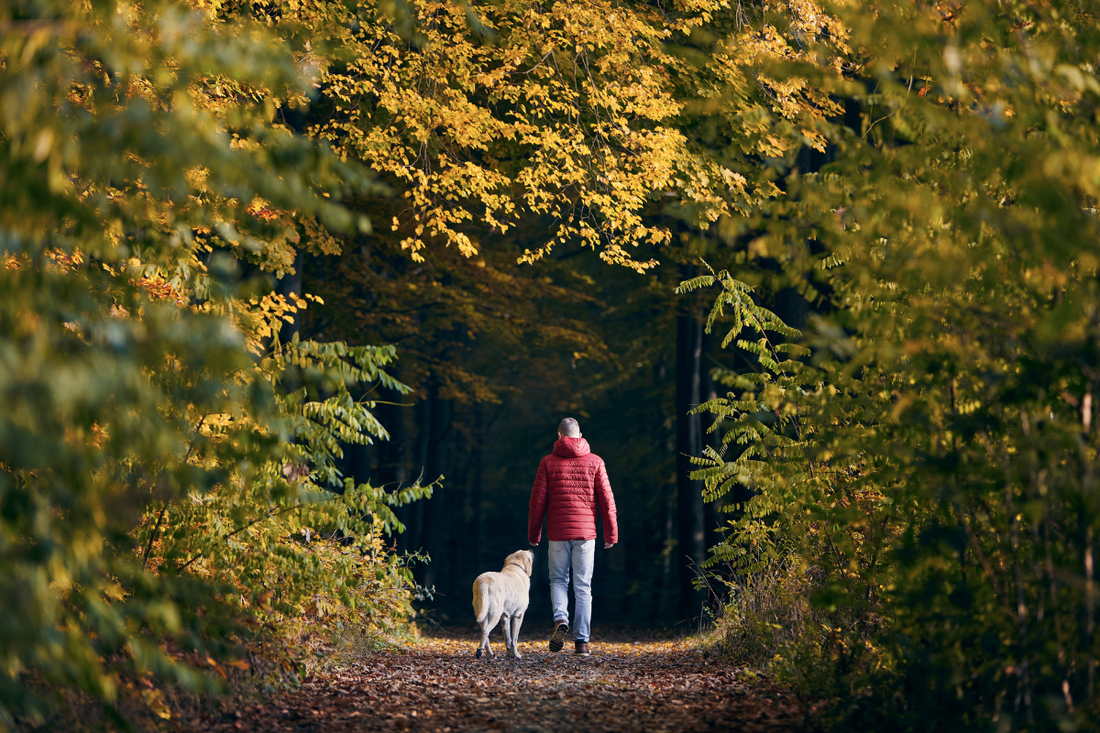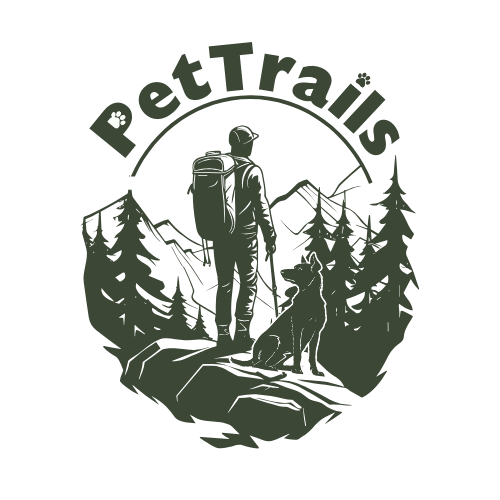
5 Signs Your Dog Is Done With the Trail: Reading Canine Body Language in Cooler Weather
Share
Cooler temperatures and shifting trail conditions can affect dogs in ways that aren’t always obvious. Unlike people, dogs can’t speak up when they’re cold, tired, or mentally tapped out. It’s up to us to read the signs.
This guide outlines five clear, research-backed signs that your dog may need to rest, turn back, or skip the next stretch of trail. Recognizing these early protects your dog’s health and helps you build safer outdoor routines.
1. Slowing Down or Lagging Behind Consistently
Dogs, especially active breeds, are usually eager to lead the way. If your dog starts lagging behind or frequently stops on level ground, it’s a reliable red flag.
What to watch for:
- Slower pace despite familiar terrain
- Repeated stopping to sit or lie down
- Resisting leash cues to move forward
What it may indicate:
- Muscle fatigue
- Joint discomfort (especially in seniors or large breeds)
- Early signs of hypothermia if the ground is cold or wet
What to do:
Stop and assess. Check paws for cuts or debris, feel your dog’s ears and body for temperature changes, and consider turning around if energy doesn’t rebound after a short break.
2. Excessive Shivering or Tension in Muscles
Dogs handle cold better than we think, but they are not immune to it. Shivering is the first physical sign of being too cold, but many owners brush it off.
What to watch for:
- Noticeable tremors or shivering while walking or resting
- Tense posture with tail tucked close to the body
- Avoidance of sitting or lying on cold surfaces
What it may indicate:
- Early-stage hypothermia
- Discomfort from cold, damp, or windy conditions
- Loss of core temperature due to poor insulation or a wet coat
What to do:
Layer your dog with an insulated coat, take breaks off cold ground using a mat or towel, and keep moving to generate warmth. If shivering continues, head back and warm up in a controlled environment.
3. Loss of Interest in Surroundings
Dogs are naturally curious. When that curiosity fades, it often means their focus is diverted by discomfort or fatigue.
What to watch for:
- Ignoring commands or refusing treats
- Refusing to sniff or interact with the trail
- Head and tail lowered for extended periods
What it may indicate:
- Sensory fatigue
- Overexertion, especially on long or steep trails
- Emotional stress from noise, crowds, or weather
What to do:
End the hike early. A flat, disengaged dog is not having fun. Shorten future hikes or adjust pacing and stimuli to build positive associations.
4. Frequent Paw Licking or Limping
Autumn trails often include mud, sharp debris, frost, or hidden hazards under leaves. Paw sensitivity is common in cooler weather and worsens with exposure to moisture or ice.
What to watch for:
- Licking or chewing at paws mid-hike
- Reluctance to put weight on one or more paws
- Sudden limping after walking through wet or icy patches
What it may indicate:
- Paw pad abrasions or cuts
- Ice or debris lodged between toes
- Cold sensitivity or early frostbite
What to do:
Check paws immediately. Dry and clean them, remove debris, and apply paw balm if you carry it. If limping continues, end the hike to prevent worsening the injury. Booties may be needed for future outings.
5. Unusual Vocalizations or Panting in Cool Weather
Panting is normal in heat or after a climb. But if your dog is panting heavily on a cool October trail, that may signal something is off.
What to watch for:
- Rapid or shallow panting in 50°F or cooler temperatures
- Whining, barking, or yelping for no visible reason
- Excessive lip licking or yawning, which can be signs of stress
What it may indicate:
- Pain or injury not yet visible
- Anxiety or over-arousal from environmental stimuli
- Respiratory strain or discomfort due to cold air
What to do:
Stop moving and calm your dog. If panting persists or sounds strained, return to the trailhead. Dogs with flat faces or chronic issues may need extra caution in cooler air.
Final Thoughts: Know When to Turn Back
Not every hike has to be finished. The goal is to keep the experience safe and enjoyable for both of you. Ignoring your dog’s discomfort can lead to injury or long-term fear of the trail. Listening to subtle cues builds trust and strengthens your bond outdoors.
When in doubt, turn around. Your dog will thank you later.
🐾 Want to Hike Smarter?
Explore PetTrail Essentials' blog for more trail safety tips, cold-weather gear guides, and practical advice. Share your own trail experiences with us and let us know how your dog tells you they’ve had enough.
